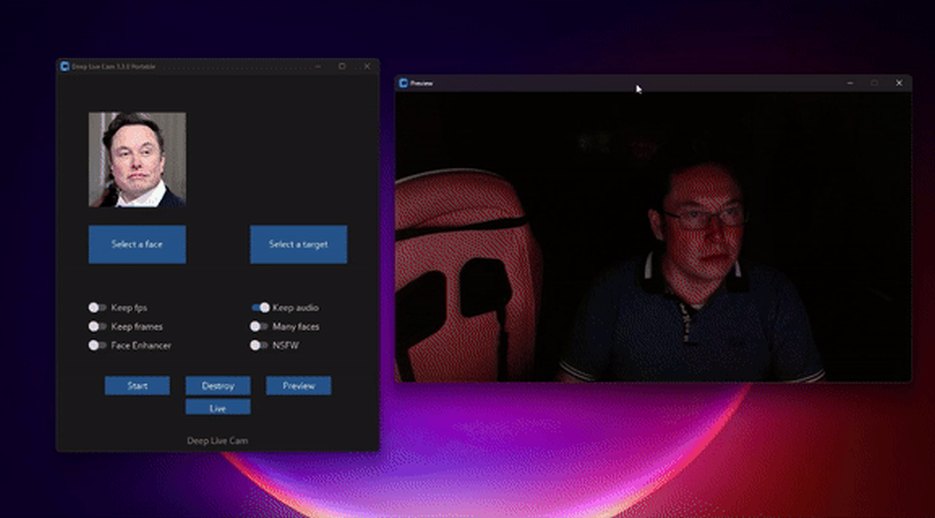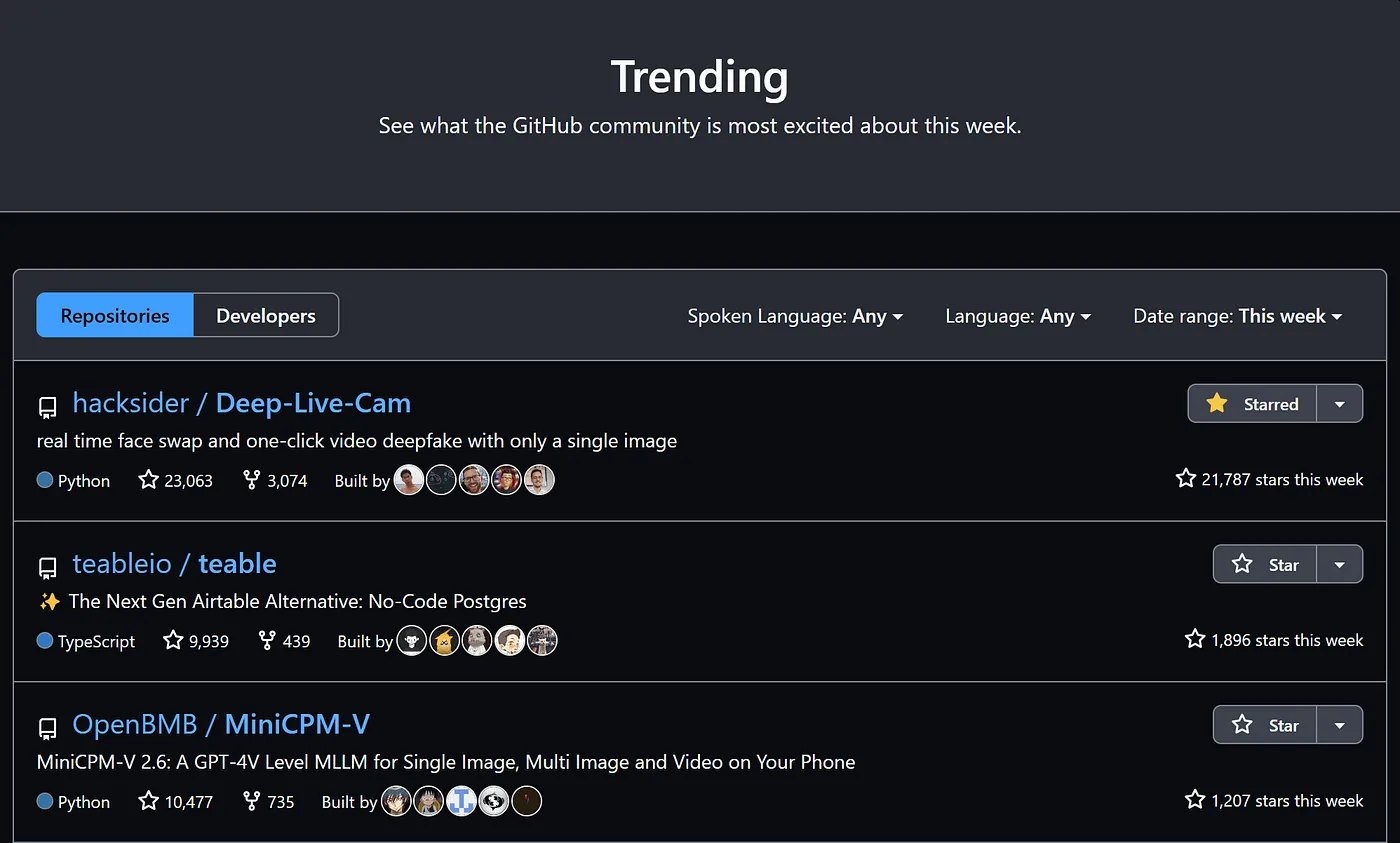Deep-Live-Cam: A real-time face swap tool that lets anyone impersonate you in fake video calls or livestream

Imagine hopping onto a Zoom call and discovering you’ve been tricked. That’s the reality with the new AI face-swapping software “Deep-Live-Cam,” which allows you to change your face in real-time during a video call or live stream session. This once sci-fi concept is now a reality thanks to modern technology. Curious how it works? Read on.
Deep-Live-Cam is an open-source tool leveraging AI to swap faces in real time. With just one photo, you can replace your face with someone else’s in both live and recorded video feeds. This breakthrough is built on advanced deepfake tech and is accessible on GitHub, making it a powerful yet potentially risky tool.
Unlike Samsung’s deepfake video tech from three years ago, Deep-Live-Cam enables anyone to impersonate someone else using only a photo and free software.
The dangers are real: Earlier this year, a finance worker in Hong Kong was scammed out of $25.6 million after a video call with deepfakes of the company’s CFO and other employees. The scammers convinced the victim to make multiple transfers, which weren’t discovered as fraud until a week later.
Deep-Live-Cam Real-Time Face Swap Tool Lets You Become Anyone in a Livestream and Video Calls
Deep-Live-Cam’s real-time face swapping is not new, but its open-source availability and impressive performance have skyrocketed its popularity. It quickly became a top trend on GitHub, receiving over 1,600 stars within 24 hours.
Since its debut on GitHub, Deep-Live-Cam has become a social media sensation. The software uses a single photo to superimpose a person’s face onto a live webcam feed, accurately mimicking their pose, lighting, and expressions. Though not perfect, the technology’s swift progress is clear, demonstrating how easily remote deception can now be achieved.

How Deep Live Cam Works
Deep-Live-Cam, like many open-source GitHub projects, integrates several existing software packages into a new interface and is a fork of an earlier project called “roop.” It operates by detecting faces in both source and target images and then swaps them using the “inswapper” AI model. This model, trained on millions of facial images, accurately adjusts facial expressions and angles. Another model, GFPGAN, refines the quality of the swapped faces by enhancing details and correcting artifacts.
The inswapper model, developed by InsightFace, has learned to infer three-dimensional facial structures from two-dimensional images and distinguish between identity-specific and pose-specific features. This allows it to blend the identity of one face with the pose and expression of another.
Deep-Live-Cam is one of several face-swapping tools available. Similar projects, like facefusion, use the same technology but with different interfaces. Currently, these tools require a complex setup involving Python and deep learning libraries, but as the open-source AI community continues to innovate, face-swapping technology is expected to become more user-friendly and improve in quality.

A demo created by the Deep-Live-Cam developer showing a face swap with Elon Musk.
Deepfake Live Cam and Emerging Identity Theft Risks
Despite being in development since late last year, Deep-Live-Cam’s release on GitHub a week ago has shaken the tech community and raised alarms about digital identity.
Videos circulating online show the software convincingly imitating figures like Elon Musk and J.D. Vance in real time. This surge of attention briefly propelled the open-source project to No. 1 on GitHub’s trending list (it’s currently at No. 4), where it remains available for free download.
Illustrator Corey Brickley highlighted the risks on X, noting, “Weird how all the major innovations coming out of tech lately are under the Fraud skill tree,” and suggested, “Nice remember to establish code words with your parents everyone,” emphasizing the need for secure methods to verify identities.
Deep-Live-Cam combines several AI models to achieve its results. It detects faces in both a source image and a live video feed, swaps them using a model called “inswapper,” and then enhances the face with GFPGAN to make it look more realistic. Trained on extensive facial image datasets, the technology creates highly convincing deepfakes.
X user João Fiadeiro showcased the tool by replacing his face with that of J.D. Vance, Hugh Grant, Mark Zuckerberg, and George Clooney.
Real-time deepfakes are here. I used the repo below to swap my face directly in my webcam feed as JD Vance, Hugh Grant, Zuckerburg, and George Clooney.
We know people have been using this kind of tech for malicious purposes… Don't trust your eyes, don't trust your ears. pic.twitter.com/iWvgtwtXLD
— joao (@jay_wooow) August 9, 2024
How To Protect Yourself from Deepfakes
The first step in avoiding deepfakes is to be extremely cautious about the personal information you share online. Use strong privacy settings and limit access to your data, including photos and videos. Consider reducing publicly available material and be mindful of who can view your content.




